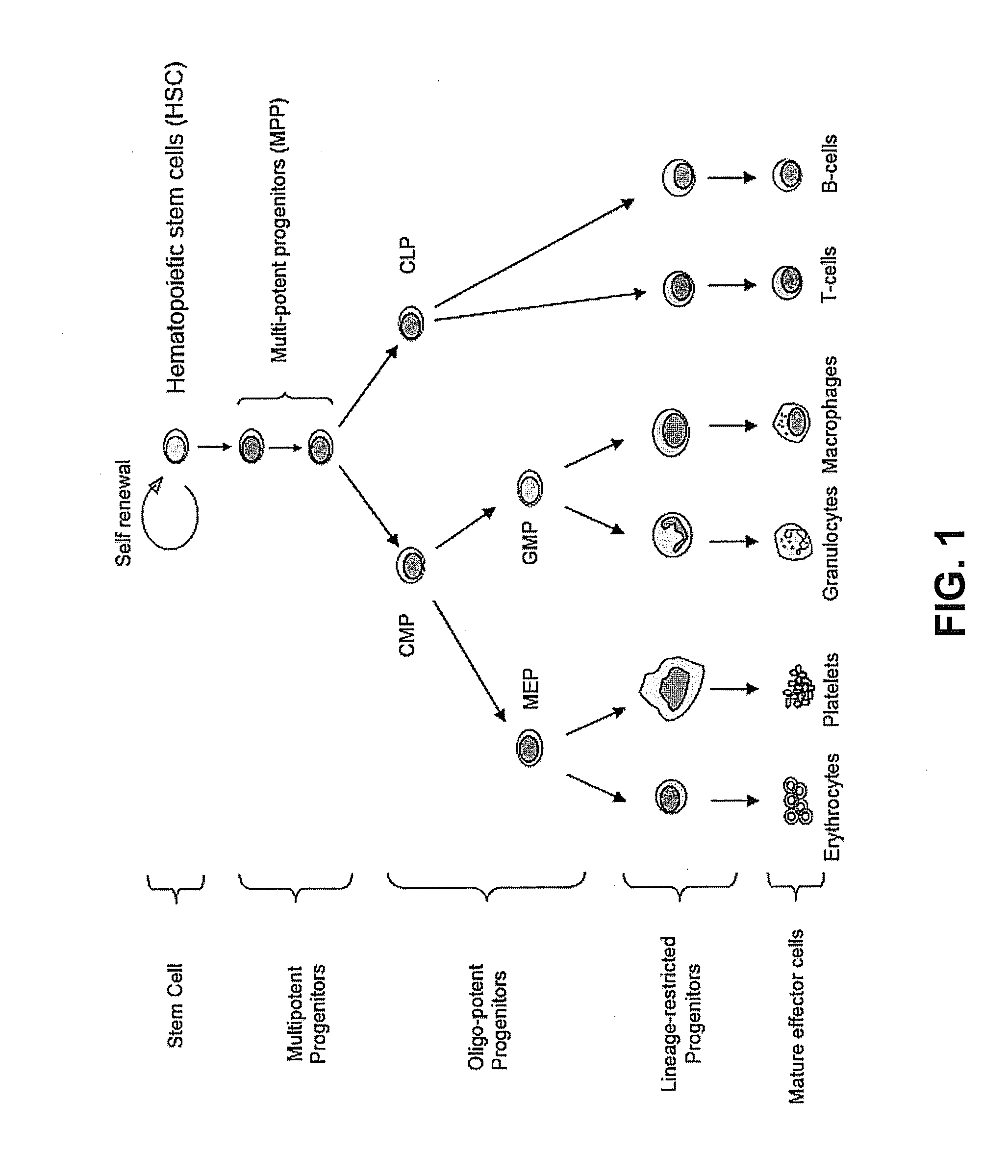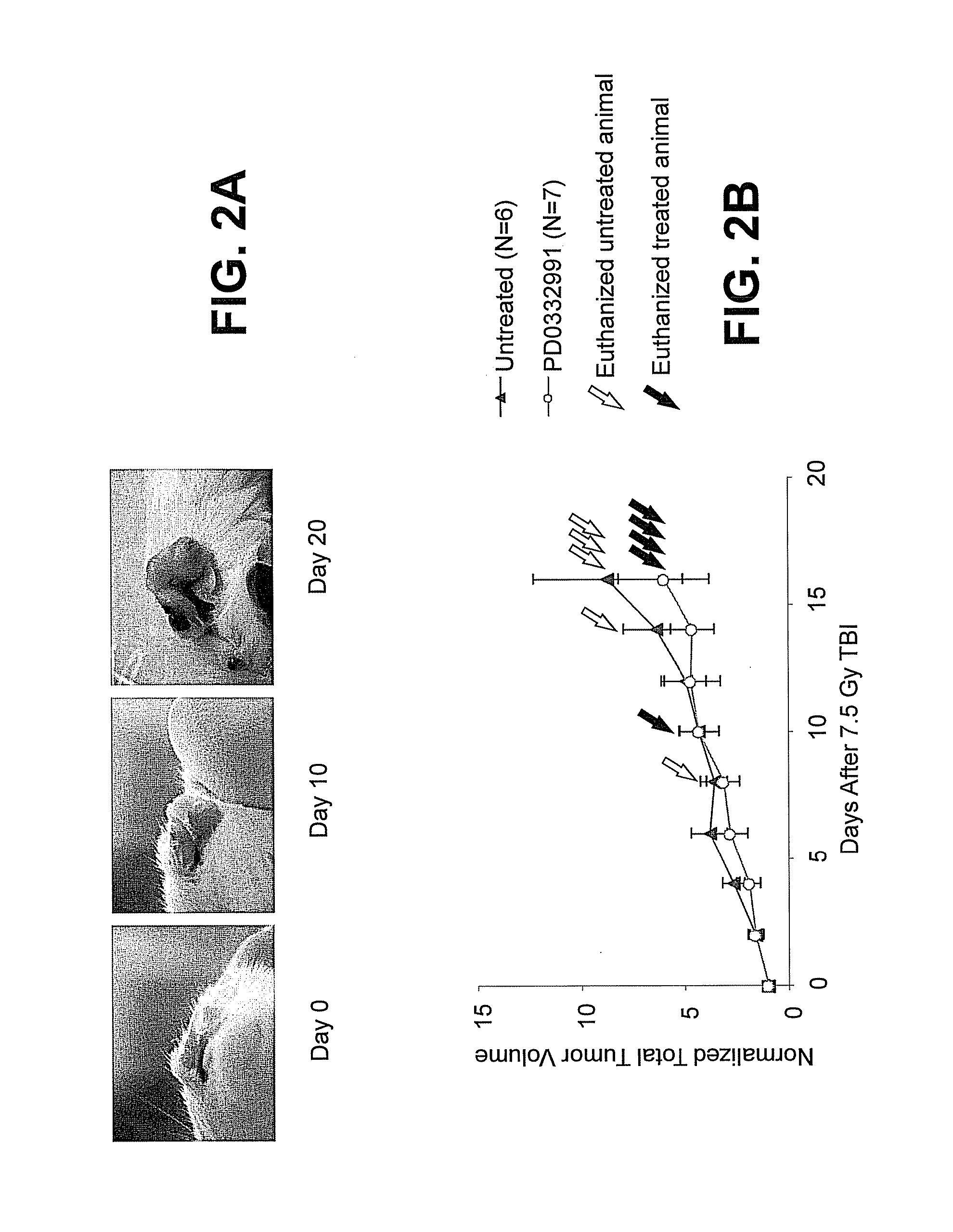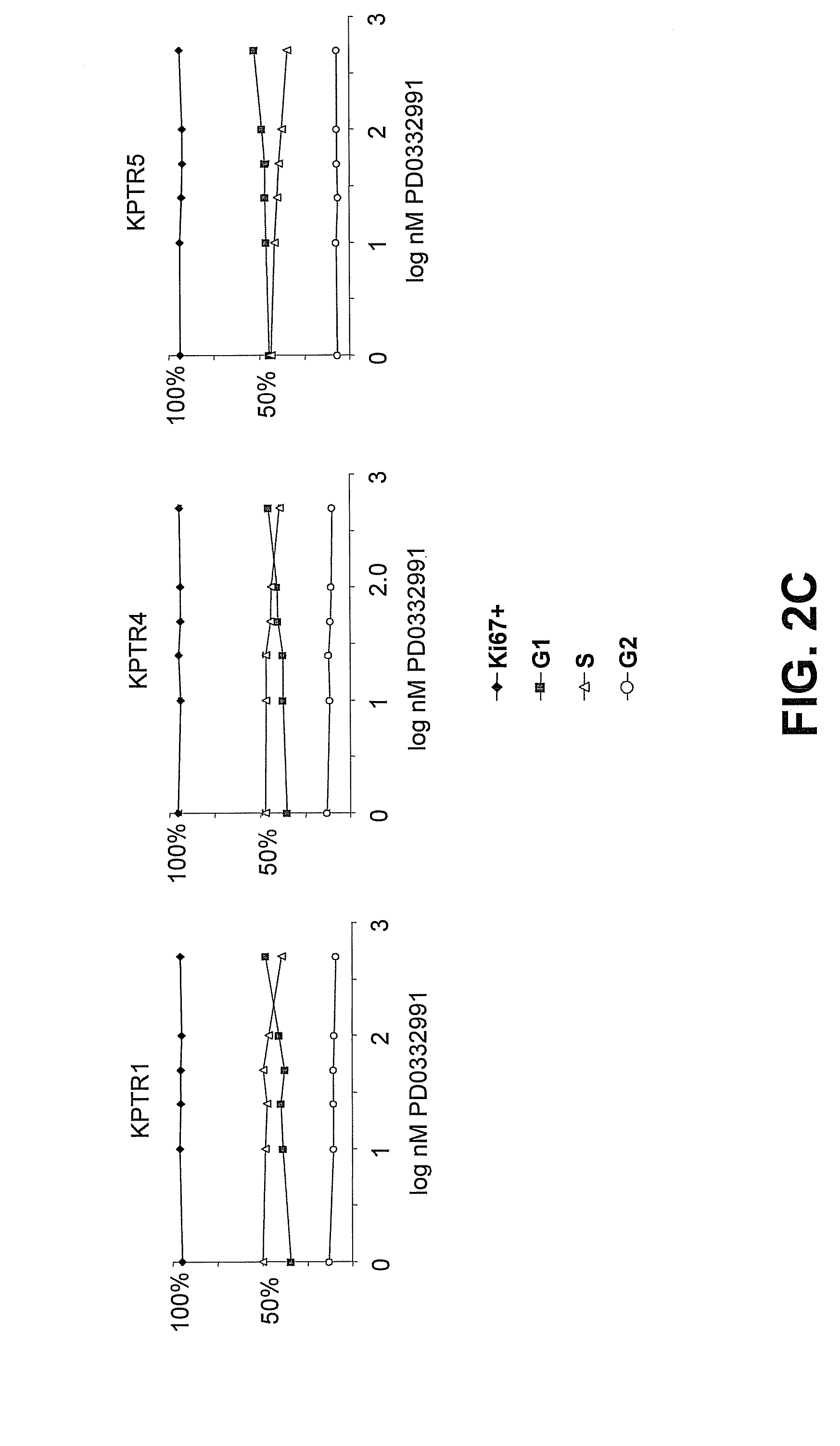Hematopoietic protection against ionizing radiation using selective cyclin-dependent kinase 4/6 inhibitors
a technology of cyclin-dependent kinase and hematopoietic protection, which is applied in the direction of drug compositions, antinoxious agents, extracellular fluid disorders, etc., can solve the problems of reducing the effect of ionizing radiation, difficult (if not impossible) selectively administering therapeutic ionizing radiation to abnormal tissue, and proximal normal tissue of abnormal tissue is also exposed to potentially damaging doses of ionizing radiation, so as to reduce or prevent the effect of reducing radiation
- Summary
- Abstract
- Description
- Claims
- Application Information
AI Technical Summary
Benefits of technology
Problems solved by technology
Method used
Image
Examples
example 1
In Vivo Activity in Genetically Engineered Murine Melanoma Model
[0241]It has been suggested that melanoma appears likely to require persistent CDK4 / 6 activity for tumor maintenance because cyclin D1 is a major target of the RAS-RAF-ERK pathway, which is activated in the vast majority of melanoma (see Curtin et al., N. Engl. J. Med., 353, 2135-2147 (2005)) and somatic p16INK4a inactivation is seen in the majority of human melanoma. See Walker et al., Genes Chromosomes Cancer, 22, 157-163 (1998); and Daniotti et al., Oncogene, 23, 5968-5977 (2004). Therefore, this tumor type is characterized by two genetic lesions that would be expected to activate CDK4 and / or CDK6. In order to study the role of CDK4 / 6 activity in melanoma maintenance, the well characterized Tyr-RAS+INK4a / Arf− / − model of melanoma developed by Chin and co-workers was used in the FVB / n genetic background. See Chin et al., Genes &Development, 11, 2822-2834 (1997). In this genetically engineered murine model (GEMM), melan...
example 2
Selective G1 Arrest in CDK4 / 6-Dependent Cells
[0244]Several human cell lines were exposed to the selective and nonselective small molecule CDK inhibitors shown in Table 1, above. CDK4 / 6 dependent cell lines, including telomerized human diploid fibroblasts (tHDF) and human melanoma cell line WM2664, demonstrated strong, reversible G1-arrest after exposure to the potent and selective Cdk4 / 6 inhibitors PD0332991 or 2BrIC. See FIGS. 3A-3B. In contrast, less selective CDK inhibitors, such as those that additionally target CDK1 / 2, including roscovitine, compound 7 (i.e., R547), and flavopiridol variably produced a G2 / M block, intra-S arrest, or cell death (sub-GO) in these cell types. Compounds 1-6 and 8-15 from Table 1 also showed lack of selective G1 arrest. An RB-null melanoma line, A2058, was, as expected, insensitive to selective CDK4 / 6 inhibition, but similarly displayed a G2 / M or intra-S arrest and / or cell death after exposure to the less specific CDK inhibitors. The proliferation o...
example 3
Protection from IR-Induced DNA Damage in Cells
[0245]IR exposure caused extensive DNA damage (comet tails and γH2AX foci) and DNA damage response (p53 expression) in all cell lines tested, including CDK4 / 6 dependent cell lines. Treatment with selective CDK4 / 6 inhibitors PD0332991 or 2BrIC prior to IR attenuated DNA damage response (see FIGS. 4A-4B), γH2AX formation (see FIGS. 5A, 5B, 5F, and 5G), and DNA damage (comet tails; see FIGS. 5C-5E) only in cell lines in which CDK4 / 6 inhibition causes a clean G1-arrest. For example, telomerized human diploid fibroblast (tHDF) cells were either pretreated with 100 nM PD0332991 for 24 hours and then exposed to 6 Gy IR, exposed to 6 Gy IR without PD0332991 pretreatment, or simply treated with PD0332991 but not exposed to IR. The cells were then stained for γH2AX foci (green) and phalloidin (red). Strong green nuclear patches, indicating DNA damage (i.e., γH2A)(foci), were present in the IR-only treated tHDFs, but were not substantially present ...
PUM
| Property | Measurement | Unit |
|---|---|---|
| time | aaaaa | aaaaa |
| particle size | aaaaa | aaaaa |
| particle size | aaaaa | aaaaa |
Abstract
Description
Claims
Application Information
 Login to View More
Login to View More - R&D
- Intellectual Property
- Life Sciences
- Materials
- Tech Scout
- Unparalleled Data Quality
- Higher Quality Content
- 60% Fewer Hallucinations
Browse by: Latest US Patents, China's latest patents, Technical Efficacy Thesaurus, Application Domain, Technology Topic, Popular Technical Reports.
© 2025 PatSnap. All rights reserved.Legal|Privacy policy|Modern Slavery Act Transparency Statement|Sitemap|About US| Contact US: help@patsnap.com



